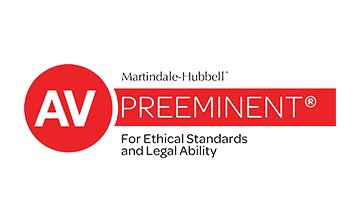Executive Compensation in North Carolina Divorce (RSUs & Stock Options)
Quick answer: How are RSUs and stock options divided in a North Carolina divorce? The court classifies each grant by grant date and vesting period, then uses a time-rule (coverture) fraction for unvested awards to separate marital from separate portions. Value is set per type (shares or option value) and typically accounted for net of taxes. Distribution is done by deferred division at vest, an offset buyout, or transfer of vested shares with clear order language employers can follow.
Protect the equity that drives your case. We read the plan, map each grant, model taxes, and draft orders that HR, payroll, and transfer agents can implement without confusion.

Your North Carolina Executive Compensation Divorce Lawyer
Krispen Culbertson, North Carolina family lawyer with 20+ years handling RSUs, stock options, PSUs, ESPP, and restricted stock in equitable distribution—time-rule apportionment, tax modeling, and employer-ready orders.
Memberships: North Carolina State Bar; local family law sections. Courts: District Court calendars statewide with regular hearings in Guilford County.
Start by situation
Fast answers
Grant vs. vest: Grants made during marriage are often partly marital. Unvested portions are apportioned with a time-rule that matches service during marriage.
Net of tax: RSUs usually withhold at vest. We divide the net shares or cash and track supplemental rates vs. actual taxes.
Orders that work: Many plans will not honor QDROs. We use share-on-vest and notice/escrow terms the employer can follow.
Support coordination: Equity income can affect alimony and child support. We prevent double counting.
Classify and map each award
We inventory the plan documents, grant notices, vesting schedules, performance metrics, blackout/10b5-1 rules, and brokerage statements. Each grant is tagged as marital, separate, or mixed and placed on a master timeline.
Time-rule apportionment for unvested equity
For service-based vesting, courts often apply a coverture fraction (marital service time ÷ total service time to vest). That fraction of each tranche is marital and can be divided at vest.
Taxes, withholdings, and net value
RSUs typically trigger W-2 income at vest with automatic withholding. Options can create ordinary income on exercise and capital gains on sale. We divide net shares or net proceeds and track true-up language for any tax mismatch.
Distribution methods
- Share on vest: employee holds awards; on each vest the non-employee receives their percentage of net shares or cash.
- Offset/buyout: trade equity value for other assets with interest and security if needed.
- Transfer of vested shares: where plan rules allow, with clear cost-basis and holding-period notes.
Employer-ready order language
We include plan-compliant notice, escrow or holdback directions, restrictions on sale during blackout, and brokerage delivery instructions so HR and transfer agents can carry out the order.
Private companies and liquidity
For private equity, we address redemption windows, fair value appraisals, and escrowed payments tied to liquidity events. If transfer is barred, we use share-on-vest in cash equivalents with verifiable statements.
Avoiding double counting with support
We coordinate equitable distribution with support. Equity used for property division should not be counted again as income unless it is new, post-division compensation.
Evidence and records
- Plan documents, grant notices, award agreements, and vesting schedules
- W-2s, pay stubs, 1099/1095, brokerage and payroll statements
- Performance metrics for PSUs; ESPP purchase logs and discounts
- Blackout dates, insider policies, Rule 10b5-1 plans
What to bring and your first 72 hours
Document checklist
- All equity award letters and plan summaries
- Two years of vesting/exercise history with confirmations
- Most recent W-2 and pay stubs showing equity withholdings
- Brokerage account statements and HR portal screenshots
Your first 72 hours with our team
1) Grant map
Timeline of awards, vesting, and service months.
2) Apportion
Apply coverture fractions to each tranche.
3) Tax model
Net-of-tax projections for RSU vest and option exercise.
4) Order draft
Employer-ready share-on-vest or offset language.
5) Settlement
Coordinate with support to prevent double counting.
Related: Equitable Distribution • Tax, Retirement & QDRO • Business Valuation • Alimony
FAQs
Are unvested RSUs marital property in North Carolina?
Do QDROs apply to stock plans?
How are taxes handled on RSUs and options?
What if the employer will not transfer shares to the non-employee?
How do performance RSUs (PSUs) get divided?
Why North Carolina families choose Culbertson & Associates
- 20+ years dividing RSUs, options, PSUs, ESPP in NC divorce
- Employer-ready orders that HR, payroll, and brokers follow
- Accurate coverture math and tax-smart modeling
- Settlements that avoid double counting with support
Client reviews
A. Jensen — “They mapped every RSU and option and set a share-on-vest plan HR could actually process. Smooth and fair.”
M. Ortiz — “Krispen explained coverture and taxes in plain terms. The final order matched what payroll needed.”
L. Warren — “We avoided double counting with support and closed with a clean offset. No confusion at the broker.”
R. Gupta — “Private-company units were hard. They built escrow terms tied to liquidity so everyone was protected.”
E. Shaw — “Employer would not accept a QDRO. Their share-on-vest language worked the first time.”
T. Cole — “Practical, steady, and thorough. The numbers and the order both made sense.”
Visit Our Greensboro Office
Culbertson & Associates
315 Spring Garden St Ste #300, Greensboro, NC 27401
(336) 272-4299 • culbertsonatlaw.com
Hours: Mon–Fri 8:30 AM–5:00 PM • Area served: North Carolina


Contact us now
book consultation







No Comments
Sorry, the comment form is closed at this time.